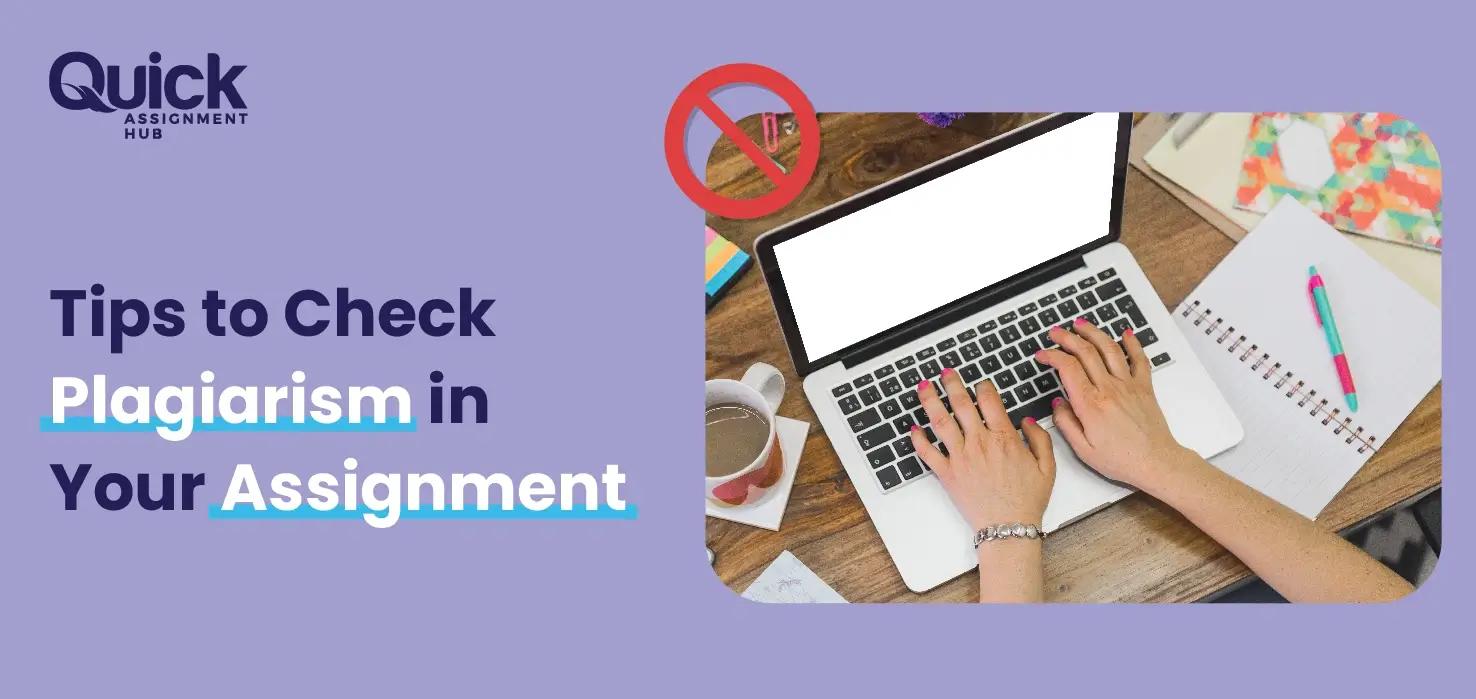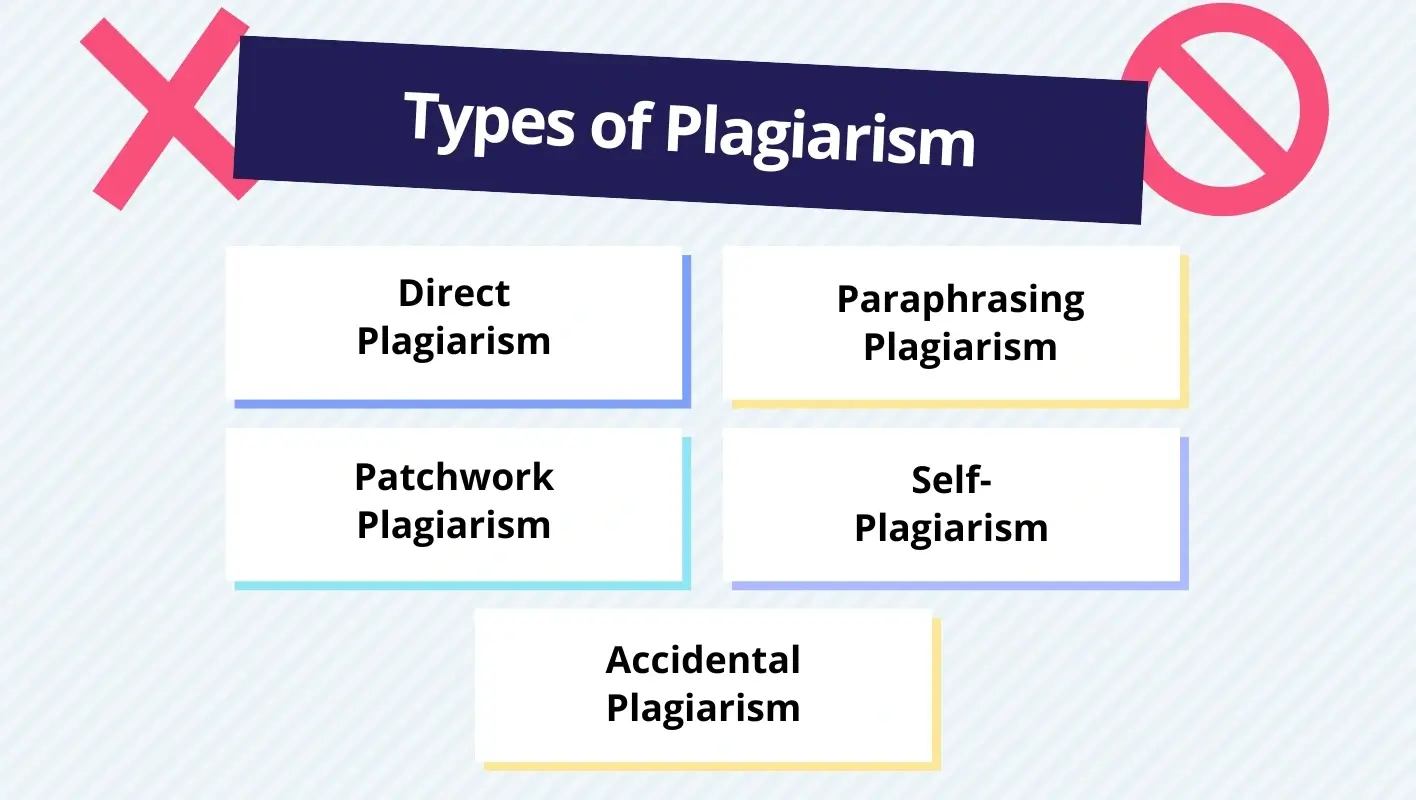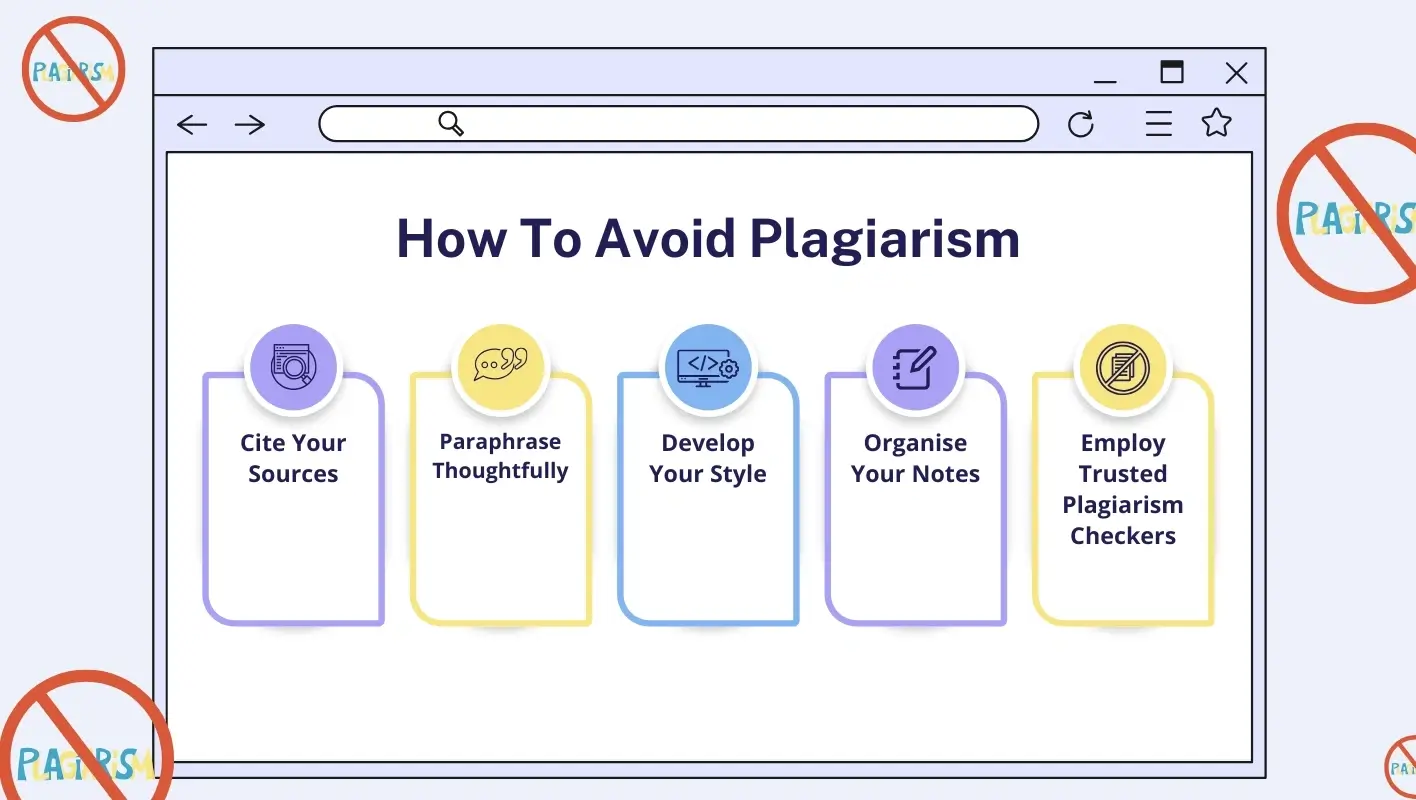
The vastness of the internet can be a great asset and a huge challenge for students, too, because it is easy to find oneself copying another person's work without even realising it.
However, there are direct consequences to plagiarism. Today, let's talk about the measures to take to avoid plagiarism. A broad overview of the tactics that help us to check plagiarism and avoid it.
Plagiarism means the use of ideas and words generated by another individual with the intent of taking them as your own without giving proper recognition to the individual whose work it is. It isn't as simple as copy-pasting and the works of creation. It is creating new content by borrowing methods and ideas from others. It is also not giving proper credit. In a way, plagiarism takes away anything new an individual creates and can greatly stain your reputation.
Understanding the different types of plagiarism can help you avoid it effectively:

Direct Plagiarism: Word-for-word translation of a text with no use of quotation marks, as well as providing no sources.
Paraphrasing Plagiarism: A work of a source is copied word for word with some changes in structure within the paragraphs of the text; however, the author's name is not mentioned.
Patchwork Plagiarism: Phrases, claims, or ideas taken from several sources are not credited to anyone but combined into one.
Self-Plagiarism: This is when one fails to acknowledge or inform that one's work has been previously done for assignments relevant to the new project.
Accidental Plagiarism: A source or an idea is not properly referenced or is completely left out in the case of plagiarism.
Once you understand these types, you will be in a better position to ensure that plagiarism is something that you will not do.
Your First Order
Get 20% OFF!
If you intend your document to be original, make sure you do the following to check for plagiarism in your content properly:
Most plagiarism detection programs are reliable and can easily detect the work of other authors within your presented content. Using Turnitin, Grammarly, or Quetext is a good option for checking plagiarism. They provide similarity reports and identify the flagged areas by highlighting them.
Going through each section of the document to confirm if specific sections require citations. This is particularly relevant where the statistics, quotes, or ideas are not original.
Crosscheck that the in-text citations and references list are formatted according to the style specified (APA, MLA, or Chicago). Poor or missing citations can cause you to plagiarise unintentionally.
Conduct manual reviews and use software programs to cover a wider area to prevent as many errors as possible. This dual technique reduces errors, thereby increasing accuracy.
If you can't afford a premium service, you can try many free tools to check plagiarism that will help to check plagiarism:
DupliChecker: A browser-based tool that allows you to check for copies of any document for free, and it generates a detailed report specifying any duplicate content.
Grammarly (Free Version):
Although it serves as an editor, the task of basic plagiarism detection is now included in the free version of Grammarly.
Plagscan: A small document can be checked for plagiarism at no cost using this tool, which only requires a web browser.
Quetext: This tool has a user-friendly interface and is a great tool for checking plagiarism when working on short essays and assignments.
These tools are useful for the first round of checks, but for improved accuracy, they should be combined with thorough manual checking.
Preventing plagiarism in the first place is far better than detecting it later on. Here's how you can make sure of it in your writing:

If you are thinking of copying ideas, quotes, or data from another work, do remember to acknowledge the author. Use the citation style instructed by your institution or publisher.
You don't have to quote someone directly – try thinking about the core ideas and put them in your own words. But do not forget to reference the source.
Explore the possibility of a critique or explanation of the issue. We are trying to be more active because the numerous outside sources used are kept to a minimum.
When doing research, keep a precise and detailed list of all the materials you have and the materials you have used in the paper. This practice also serves to prevent you from committing unintentional plagiarism.
After finishing your work and before forwarding it for any evaluations, check it with a plagiarism detection program, as it helps to check for unintended mistakes.
Also read: How to Start With Essay Writing? Tips For Students
How severe the repercussions are for committing plagiarism depends upon the context and severity:
Academic Consequences: Colleges and universities encourage strict adherence to policies on plagiarism. Students who violate this policy are likely to be awarded zero grades and may be suspended or expelled.
Professional Consequences: At the workplace, stealing another person's work can make you lose your status for good, get fired, or end up in court for a lawsuit.
Legal Issues: Attribution-less reuse of other people's work is punishable by law. Among the measures for punishment, offenders may be made to pay sums of money or can be sued in court.
Harm to Reputation: A false claim of ownership of a work can deeply damage both personal and professional relationships, and it can take a long time to repair.
On a professional and academic level, originality and uniqueness of work are crucial. To encourage our students, we offer the following services to ensure non-plagiarity of all papers submitted to our clients.
Individualised Papers Assignments: Every paper assignment or project is originally designed and implemented to suit your needs and objectives.
Assistance With Plagiarism Detectors: We use reliable tools such as Turnitin and other systems, and we generate a plagiarism report that certifies the originality of your work and content while delivering our assignment writing services.
Referencing/ Citing Guidelines: All students must know how to properly cite their works and format to avoid plagiarising sources and breaking academic standards. We have the required expertise and knowledge of different referencing styles and their applications to help you deliver a great assignment as per the required standards.
Training on Originality: Many strategies, such as rewriting, attribution, and idea generation, assist our clients in developing papers that will be original and not plagiarised.
Universal Quality Control: Review and editing of every document entirely lacks duplication and meets all standards.
In exercising your integrity and your originality as an intellectual, it is very important to remember that egalitarianism is true in this case, and it is freedom from the wrath of any penalties. Quick Assignment Hub gives you insight into resources that allow you to directly put this theory into action and make an impact with your work.
Plagiarism is a term used to describe stealing someone else's work for profit, which is condemned in academics and professional circles and beyond. To combat this issue, it is crucial to comprehend different types of plagiarism, learn how to check for plagiarism in a document and implement methods to help avoid making such mistakes in the papers.
If that is a challenge for you, consider seeking professional help from Quick Assignment Hub. Using such services comes with a guarantee of high-quality, experienced, well-written, and original content fulfilling or appealing to your requirements. The time is now to start writing with confidence!